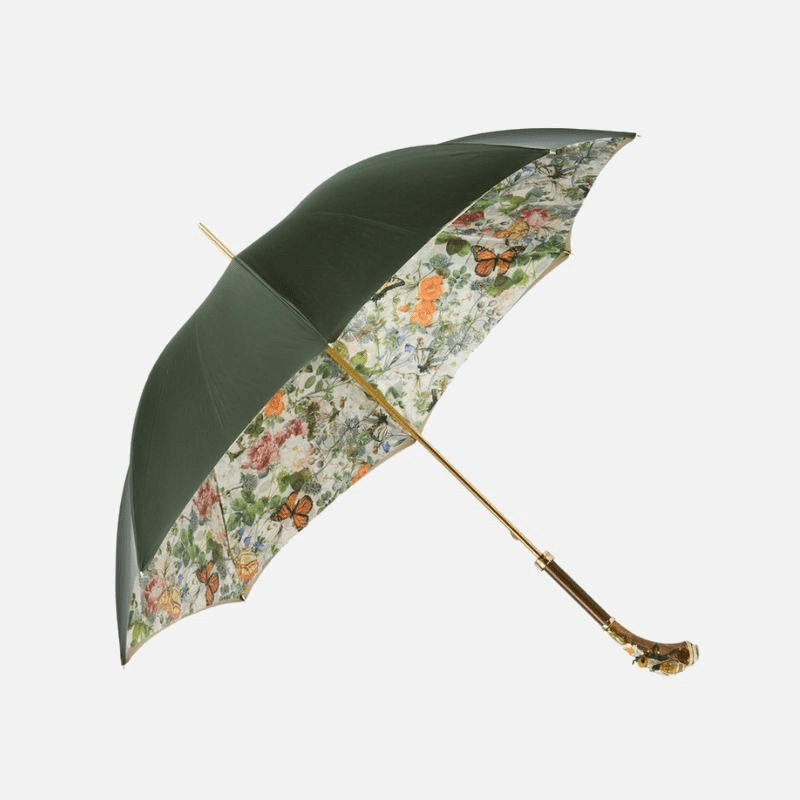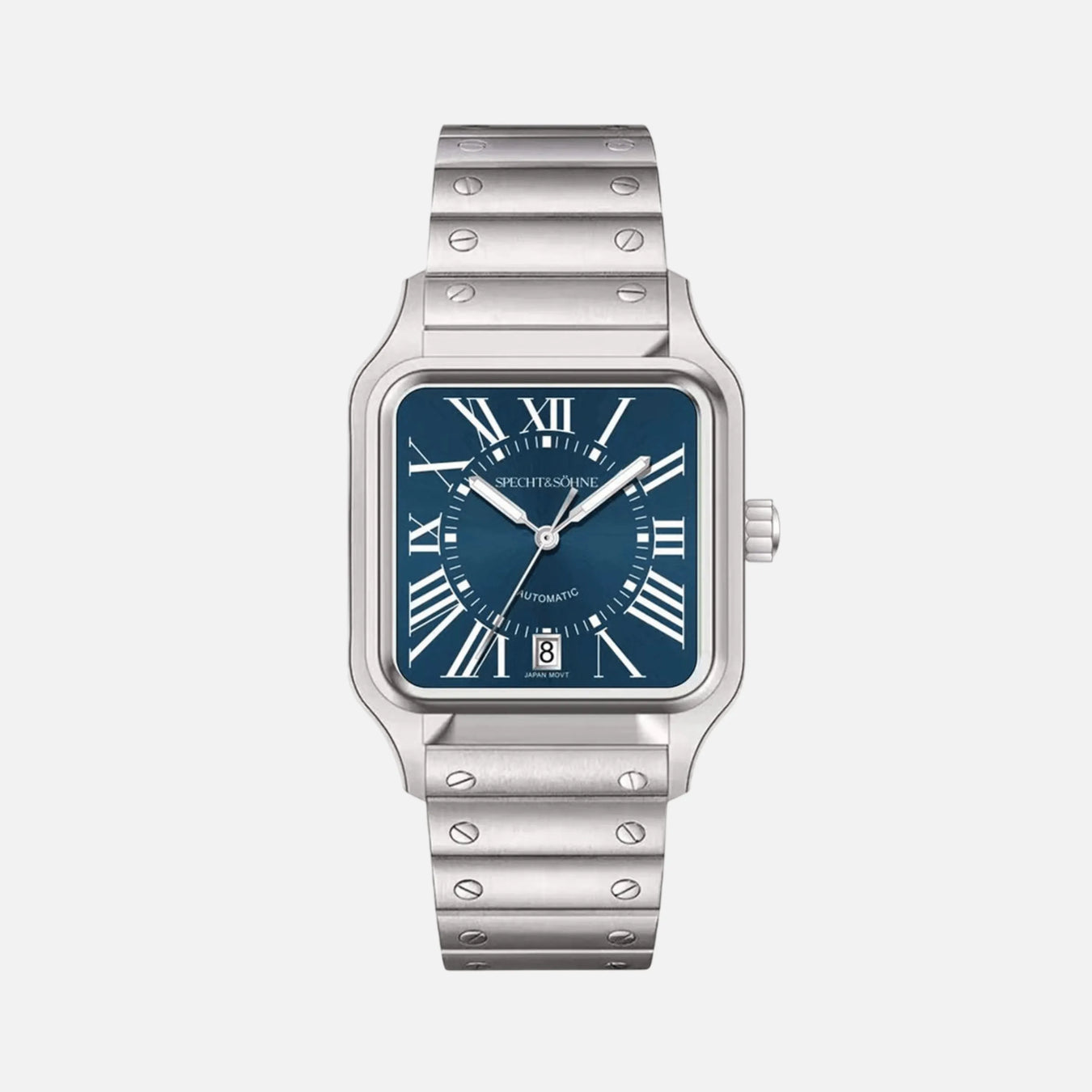
From Pawn to King: A Beginner's Roadmap to Chess Mastery
Understanding the Chessboard: Layout and Basic Rules
The chessboard, with its 64 squares laid out in an 8x8 grid, is the battlefield upon which the game of chess is waged. The squares alternate between light and dark colors, traditionally white and black, which aids players in navigating the board.
To begin, each player controls an army of 16 pieces: one king, one queen, two rooks, two knights, two bishops, and eight pawns. They are positioned on the two rows closest to the respective players. The bottom right corner square from each player’s perspective should be a light one.
Here is a basic overview of how each piece is arranged:
- Pawns: Occupying the second row from the player, pawns are the foot soldiers of the chess army.
- Rooks: Situated at the corners of the board, rooks are perceived as the castle towers with formidable range.
- Knights: Placed beside the rooks, knights have a unique ‘L’-shaped movement.
- Bishops: Adjacent to knights, bishops glide diagonally across the board.
- Queen: The queen, the most powerful piece, is placed on the remaining square matching her color.
- King: Beside the queen, the king is the key piece to protect, with a move of one square in any direction.
Understanding the basic rules is as crucial as knowing the layout. Each type of piece moves in a distinct way. For instance, pawns move forward one square, but capture diagonally. The first move of a pawn, however, can be two squares forward. Knights can ‘jump over’ other pieces.
Capturing involves taking the opponent’s piece off the board and occupying its square. And remember, when a pawn reaches the opposite side of the board, it can be promoted to any other piece, except for a king.
Check occurs when the king is under immediate threat, and the game is ended by checkmate when the king cannot escape capture. Stalemate, a draw, happens when the king is not in check but cannot move anywhere without being captured.
Armed with this elementary knowledge, beginners can start to appreciate the nuances within a set of wooden chess pieces, art 809125. For those investing in a set of large wooden chess pieces, luxury chess pieces, or a beautiful chess set as a gift for dad, knowing the basics enhances the gift’s significance and the enjoyment derived from the game.
The Power of Pieces: Values and Movement Explained
In chess, each piece exhibits unique movements and holds differing values, reflecting its potential impact on the game. Mastery begins by understanding these, not unlike learning the importance of each instrument in an orchestra.
Pawns may seem inconsequential, but they are the soul of chess. They inch forward one square at a time, but upon their first move, they have the option to jump two squares. When they reach the opponent’s end of the board, they are promoted to a more powerful piece, often a queen. Pawns are valued at 1 point each.
Knights move in an L-shape: two squares in one direction and then one square perpendicularly. This unique movement allows them to “jump over” other pieces, and they are often the first piece to enter the fray. Knights are valued at 3 points.
Bishops glide diagonally across the board and can control long stretches of squares if unobstructed. They are worth 3 points and excel in open positions.
Rooks are the bastions of strength, moving horizontally or vertically across any number of unoccupied squares. They play a crucial role in “castling,” a strategic move for king safety. Rooks command 5 points each.
Queens, the most powerful pieces, combine the abilities of rooks and bishops, moving in any straight direction for any number of squares. Their versatility makes them the game’s dominant force, reflected in a hefty value of 9 points.
The King, while not as agile due to moving only one square in any direction, is the game’s primary objective. The ultimate goal is checkmating your opponent’s king, rendering it unable to escape capture.
Understanding piece value and movement is crucial, as it guides players through safe piece exchanges and strategic sacrifices. These fundamental skills set the stage for creating more complex strategies and tactical combinations, ensuring a beginner’s journey in chess is as strategic as selecting a set of beautiful chess pieces, be it for personal enjoyment or as an exquisite gift for dad.
Strategic Foundations: Opening Principles for Success
Embarking on the journey from novice to chess master requires a keen understanding of strategic foundations, particularly in the early stages of the game. The opening is a chess battle’s incipient phase, where laying the groundwork for victory is pivotal. To navigate these waters successfully, players must be attuned to key principles that underpin effective opening strategies.
Firstly, control of the board’s center is paramount. The central squares are the game’s strategic heart and command from this position allows pieces to exert influence over a greater expanse of the board. Thus, moving the central pawns (e4, e5, d4, d5) should be a priority.
Secondly, developing the knights and bishops early is crucial for an effective opening. These “minor pieces” are pivotal in establishing board control and preparing for later stages of the game. It is generally advisable to move each piece once before considering a repeat move to ensure efficient development.
Thirdly, the safety of the king should not be overlooked. A tactic often utilized is castling, either kingside or queenside. This not only safeguards the king by placing it away from the center but also connects the rooks, centralizing their power.
Additionally, creating a solid pawn structure is vital for maintaining flexibility and staving off opposing threats. Overextending or creating weaknesses in one’s own position can be just as detrimental as failing to recognize the opponent’s frailties.
Lastly, always remain vigilant for tactics. Even in the opening, opportunities for forks, pins, and skewers can present themselves. Being alert to both the threats and possibilities will set a strong precedent for the middle game.
Mastering these opening principles is akin to giving a thoughtful gift for dad, a set of large wooden chess pieces – equally significant and foundational. Emulating the elegance of luxury chess pieces, a player’s opening moves should be both aesthetically pleasing and strategically sound.
Developing Tactics: Key Moves and Combinations
In the journey from pawn to king, understanding the subtleties behind each move is crucial. Chess is a game of infinite possibilities, but successful tactics often stem from a foundation of key moves and combinations that can sway the board in one’s favor.
When setting pieces on the board, a player must think ahead. Strategy is paramount, and this includes both short-term tactics and long-term planning. Imagine a set of large wooden chess pieces—luxury chess pieces that command attention. Each piece has the potential to change the dynamic of the game, much like a well-thought-out maneuver.
Beginners must familiarize themselves with certain tactics that often serve as the turning point in a match:
- Forks: A single piece threatens two or more opponent pieces simultaneously. This move forces the adversary to make a choice, usually resulting in a material gain.
- Pins: A piece is pinned when moving it would expose a more valuable piece behind it to capture. Such a strategic placement restricts your opponent’s options.
- Skewers: Similar to pins but with a twist. After the attacked piece moves, the piece behind it is captured.
- Discovered attacks: A piece moves out of the way, uncovering an attack by another piece.
- Double checks: A rare and powerful tactic where two pieces check the king at the same time, leaving the opponent with few viable moves.
These tactical patterns are not just moves but weapons in a chess player’s arsenal. Consider them as beautiful chess pieces—a gift for dad that keeps on giving. Each one, from the tactical fork akin to a set of wooden chess pieces art 809125, intricate and detailed, to the double check, requires practice to be used effectively.
Mastering these combinations requires more than understanding; it requires visualization. One must see the potential of the board, much like a grandmaster visualizes his victory before the match begins. These are the tactics that sharpen a novice into a seasoned player, transforming their approach from defensive to aggressively opportunistic. Understanding and employing these strategies will put any beginner on the road to chess mastery.
Positional Play: Controlling the Center and Spatial Awareness
In the quest for chess mastery, understanding positional play is as fundamental as admiring a set of wooden chess pieces artfully arrayed on the board. Positional play involves the strategic placement and movement of pieces to control vital areas of the chessboard, particularly the center. The center squares, e4, d4, e5, and d5, are the crossroads of action, serving as a launchpad for attacks and a stronghold for defense. Controlling these squares can amplify the mobility of one’s pieces, while constricting the adversary’s options.
To achieve such control, there are several key principles a beginner must embrace:
- Develop pieces swiftly: Aim to bring out knights and bishops early, enabling them to control the central squares and prepare for castling.
- Maintain pawn structure: A sturdy pawn formation can act as the backbone of one’s strategy, supporting more advanced pieces and hindering enemy maneuvers.
- Harmonize your pieces: Ensure that every piece backs up the others, creating a cohesive force that can adapt to both offensive and defensive demands.
Spatial awareness goes hand in hand with control of the center. It requires a player to be cognizant of not only where their pieces are but also where they could and should be. This comprehension is as crucial as possessing a set of large wooden chess pieces—luxury chess pieces that represent one’s tactical and strategic prowess.
Gifted with this knowledge, players learn to capitalize on their positional advantages. For instance, superior spatial awareness allows a player to spot opportunities to implement forks, pins, and skewers, tactical devices that can swing the game’s momentum.
Be it the beginner contemplating a beautiful chess set—perhaps a gift for dad—or the aspiring grandmaster, melding control of the center with spatial awareness sets the stage for nuanced play and eventual mastery. As one’s understanding deepens, so will appreciation for the elegant ballet of pieces across the chessboard, culminating in the decisive checkmate.
Endgame Essentials: Transitioning to a Winning Endgame
Transitioning into the endgame phase is akin to entering a new battlefield, where each move can tilt the scales of victory. It requires a shift in mindset from the broader tactical plays of the middlegame to a more precise, strategic approach. Here, the artistry of a set of wooden chess pieces can truly shine – each piece’s value surges, and even a single pawn can become a hero.
The mastery of endgame play is a hallmark of a seasoned chess aficionado. It is the delicate dance of leveraging positional advantages, where knowledge, patience, and foresight decide the outcome. Essential to this phase are several key strategies:
King Activation: In the endgame, the King transcends from a figure to be shielded to a dynamic force. Centralizing the King can turn it into a formidable weapon, helping in both offense and defense.
Pawn Structure: Understanding pawn structure and promotion is crucial. A passed pawn – a pawn with no opposing pawns to stop its advance – is a powerful tool that can often lead to a win if properly supported.
Piece Coordination: The coordination between the remaining luxury chess pieces becomes increasingly significant. Each piece must work in harmony, creating threats and carving a path for pawn promotion.
Simplification and Material Advantage: When ahead in material, simplifying the game can amplify this advantage. Trade pieces judiciously, but ensure that the trades lead to an advantageous, less complex endgame position.
Endgame Studies: Engage regularly with endgame studies and puzzles. This can be a beautiful chess piece gift for dad, an aspiring player, or any enthusiast keen to grasp nuanced endgame concepts.
Players must also recognize when to transition. A reduced number of pieces on the board or a shift in activity from piece development to direct king safety and pawn promotion can signal the transition phase. With a set of large wooden chess pieces spread thinly across the board, strategic foresight becomes the essence of claiming victory.
Remember, the endgame is a culmination of preceding strategies and a battlefield where the grandeur of decisive moves echoes the pageantry of chess itself.
Psychology of Chess: Managing Time and Stress
The journey from novice to adept on the 64-square battlefield often comes with navigating the psychological intricacies of chess. Notably, managing time and stress stands paramount among skills that transcend the mere tactical and strategic comprehension of the game. The ability to keep composure under the ticking clock and the pressure of an opponent’s gaze can be as critical as having a set of large wooden chess pieces—luxury chess pieces that signify preparedness and seriousness about the game.
An adept chess player knows that each move must be a blend of precision and expediency. Time mismanagement can lead to hurried decisions, errors, and ultimately, a disadvantageous position. One time-proven technique is the use of time-controls for practice games. This not only accustoms a player to the constraints of regulated play but also sharpens their capacity to make sound decisions swiftly.
On the board, stress often manifests when the unwary player faces a surprising move or a complex position. To cope, seasoned players recommend maintaining a steady rhythm of breathing to mitigate stress. Delving into a set of beautifully crafted wooden chess pieces during practice can have a calming effect, serving as a physical anchor to the present moment and keeping anxiety at bay. Some players may also find value in gifting something symbolic, such as a luxury chess set, to themselves or a ‘chess dad’ mentor, as a reminder of the elegance and depth of the game that often helps in stress reduction.
In conclusion, becoming proficient at chess is about mastering not only the positions and moves but also the psychological challenges that accompany every game. Incorporating time management and stress reduction techniques into one’s practice regimen can pivot a beginner’s progress towards becoming a king in the world of chess.
Studying the Greats: Learning From Historical Matches
As a beginner on the journey to chess mastery, one can draw a wealth of insight from historical matches played by the greats. Delving into classic games is akin to having a set of wooden chess pieces art 809125, each move telling a story of strategic depth and tactical genius. For enthusiasts, collector’s items such as a set of large wooden chess pieces or luxury chess pieces add tangible appeal and inspiration to the learning experience, reminiscent of the grandeur in historic bouts.
When a player reviews celebrated encounters on the chessboard, they learn not only about common openings and defenses but also about the psychological nuances that can determine the outcome of a game. Studying past legends allows players to see how grandmasters have applied principles of strategy and tactics in real-world scenarios, which can be more elucidating than attempting to absorb these concepts in the abstract.
What’s more, each vintage clash serves as a template for critical thinking and decision-making, showing how grandmasters weigh options before committing to a move. Reviewing games by chess icons allows an individual to understand the importance of planning several moves ahead, which is an essential skill for chess proficiency.
Collectibles such as beautiful chess pieces or chess sets that can be a gift for dad are not just ornaments but symbols of the chess legacy. They serve as reminders that the game has a storied past, filled with intellectual battles that have shaped its evolution.
For learners, the focus should be on:
- Identifying key moments that decided the matches.
- Understanding the strategic and tactical ideas that dominated the play.
- Observing the style of each grandmaster.
- Analyzing how the greats handled pressure and complex positions.
By examining historical games, learners can accumulate a wealth of knowledge and perhaps, incorporate some of the genius that characterized those bygone matches into their own gameplay.
Practical Play: Setting Up and Reviewing Your Games
Embarking on the journey from pawn to king requires not only understanding the moves but also setting up a conducive environment for play. Commence by procuring a set of large wooden chess pieces, which not only enhance the tactile pleasure of the game but also make the battlefield easier to read for a beginner. Some may opt for luxury chess pieces, which can be a beautiful chess gift for dad or any enthusiast, doubling as a functional keepsake.
- Lay out your board in a quiet, well-lit space.
- Position your pieces correctly: the bottom right square should be white.
- Have a clock ready if you’re practicing timed moves.
After playing a game, the review is equally crucial. Beginners must analyze their games thoroughly to sharpen their tactical and strategic understanding. A methodical approach to post-game analysis often involves:
- Recreating the game move by move and identifying key moments and decisions.
- Considering alternative moves at critical junctures.
- Using chess software or online platforms to analyze moves for missed opportunities or errors.
- Discussing the game with more experienced players or a coach to gain insights.
Regular reviews illuminate patterns in one’s play, helping to pinpoint strengths to build upon and weaknesses to address. By setting up an enjoyable play environment with the help of items like a set of wooden chess pieces, Art 809125, and rigorously analyzing each game, one transitions from novice maneuvers to advanced strategies, marking a decisive path towards chess mastery.
Chess Resources and Tools: Books, Software, and Online Play
As a novice in the world of chess, one begins by familiarizing themselves with the rudimentary movements of each piece. Whether it’s a set of wooden chess pieces art 809125 or a collection of luxury chess pieces, the fundamentals remain sacrosanct. The journey from learning the game’s basics to achieving mastery is enhanced by utilizing a range of tools and resources that cater to every stage of development.
When it comes to literature, several books have been acclaimed for their pedagogic excellence. These include:
- “The Complete Book of Chess Strategy” by Jeremy Silman, which outlines strategic principles.
- “Bobby Fischer Teaches Chess” by Bobby Fischer, which introduces tactical skills through programmed learning.
- “Chess Fundamentals” by José Capablanca, a staple for grounding oneself in essential concepts.
Additionally, software such as ChessBase and Fritz offers players a platform to analyze games, explore databases of historical matches, and practice against computer opponents. These tools offer insights that are crucial for enhancing one’s understanding of chess tactics and strategies.
In the contemporary digital landscape, online play has become a substantial part of a chess player’s development. Websites like Chess.com and lichess.org provide a plethora of opportunities to play against opponents from around the globe. They also offer instructional videos, interactive puzzles, and forums for discussing chess theory.
For those seeking a more tangible touch, a set of large wooden chess pieces can be a beautiful addition to any home. Such luxury chess pieces also make an excellent gift for dad or any chess enthusiast, combining aesthetics with the love of the game. Whether it’s mastering the game online or over a classic chessboard, these resources provide a solid foundation for any aspiring chess master.
Joining the Chess Community: Clubs, Tournaments, and Online Forums
To truly enhance one’s chess skills, immersion in the chess community is invaluable. Through interaction with a diverse pool of players, one gains exposure to a plethora of strategies and playstyles. This journey can begin with a set of wooden chess pieces, artfully crafted, that serve as a catalyst for a newfound passion.
Clubs
Local chess clubs offer an excellent physical platform for enthusiasts to gather. Here:
- Beginners can interact with more experienced players, absorbing knowledge and nuances of the game by observing and engaging in friendly matches.
- Players form lasting partnerships and mentorships, fostering a supportive environment.
- A club often has a set of large wooden chess pieces to play with, giving newcomers a sense of grandeur and tradition.
Tournaments
Participation in chess tournaments is essential for practical experience. They:
- Enable players to test their mettle against a variety of opponents.
- Offer luxury chess pieces as prizes, intensifying the allure of competition.
- Strengthen a player’s psychological resilience and ability to handle pressure.
Online Forums
The digital renaissance has expanded the chess community into cyberspace:
- Various websites and forums provide platforms for discussion and analysis.
- Online chess matches allow for practice anytime, with beautiful chess pieces displayed on virtual boards.
- Access to a global community enables players to encounter myriad openings and defenses.
Gifting a set of wooden chess pieces might seem simple, but it can be the first step toward greatness. And when that gift is a beautiful chess set, perhaps intended as a ‘gift for dad’ or any aspiring player, it represents an invitation to the grand tapestry that is the chess community.
Creating a Training Regimen: Practice Makes Perfect
Embarking on the journey towards chess mastery, a beginner must recognize the integral role of a structured training regimen. Excellence in chess, akin to any other skill, is forged through consistent and deliberate practice. Crafting a well-rounded routine necessitates attention to several core aspects of chess proficiency.
Firstly, familiarization with the pieces is essential. One must view a set of wooden chess pieces – art 809125, not merely as carved figurines but as the key players in a strategic battle. Beginners should spend dedicated time learning how each piece moves, understanding their strengths and their limitations.
To elevate their game, a novice should invest in a quality chess set, such as a set of large wooden chess pieces. Luxury chess pieces aren’t mere embellishments – they can enrich the training experience, making the learner feel more connected to the game. Moreover, a beautiful chess piece set can serve as a motivational tool, encouraging regular engagement with practice sessions.
An effective training regimen should include:
- Tactical Exercises: Start with solving chess puzzles daily to sharpen tactical vision.
- Game Analysis: Reviewing personal games or grandmaster games provides insight on strategic planning and common pitfalls.
- Opening Theory: Dedicate weekly sessions to study and memorize key opening lines.
- Endgame Skills: Regular practice of endgame scenarios to understand how to convert advantages into a win.
- Timed Play: Use a chess clock during practice games to acclimate to time constraints found in tournaments.
Gift for dad or a treat to oneself, investing in an exquisite chess set can serve as a catalyst for dedicated practice. Through repetition and analysis, a beginner evolves, move by move, from pawn to king.
Navigating Chess Notation: Recording and Analyzing Your Moves
For the aspiring chess aficionado, mastering the art of chess notation is as crucial as the strategic deployment of a set of large wooden chess pieces across the checkered battlefield. Recording moves with precision not only allows one to review and analyze their games but also facilitates sharing insights with peers or coaches. Let’s delve into the essentials of chess notation.
Standard Algebraic Notation (SAN)
Chess notation has evolved into what is known today as Standard Algebraic Notation (SAN). SAN uses a system of letters and numbers to represent moves:
- Each square is identified by a coordinate that combines a letter (indicating the file) with a number (indicating the rank).
- Each piece is denoted by an initial: K for king, Q for queen, R for rook, B for bishop, N for knight; pawns are indicated by the absence of a letter.
- Captures are signified by an “x” between the capturing piece’s letter and the destination square.
- Check and checkmate are represented by “+” and “#”, respectively.
Recording Your Moves
Every move should be recorded immediately, detailing the piece moved and the square to which it was moved. This creates a chronological record that is invaluable for post-game analysis.
Analyzing Your Moves
Retracing your game through chess notation helps identify strategic strengths and weaknesses. Reflecting on your recorded moves can reveal patterns, mistakes, or innovations. Whether using luxury chess pieces or a standard set, the lessons remain the same.
Notation and Improvement
By diligently recording your games, you lay the groundwork for improvement. Analyzing the movements of beautiful chess pieces, whether a gift for dad or the stalwart companions of your own chess journey, transforms each game into a learning opportunity.
Understanding chess notation enables players to study grandmaster games, communicate strategies, and ultimately, transmute their fledgling moves into a legacy as enduring as a set of wooden chess pieces art 809125.
Avoiding Common Mistakes: Tips for Continued Improvement
Chess, an intellectual ballet with a battlefield’s intensity, demands both foresight and reflection from its practitioners. As a beginner who has exchanged the initial curiosity for earnest improvement, ones journey from pawn to king is fraught with potential missteps. Ensuring progress towards chess mastery hinges on circumventing common errors as they refine their strategy alongside their cherished set of wooden chess pieces.
First, it is imperative to study the endgame as diligently as one admires the craftsmanship of a set of large wooden chess pieces. Many novices focus disproportionately on openings, but understanding endgame scenarios is pivotal for converting a strong position into a victory.
Secondly, players must resist the temptation of impulsive moves, which can be akin to directing luxury chess pieces without strategy. A systematic approach of considering the opponent’s potential responses before executing a move is essential. This cultivates a habit of foresight, crucial for ascending the ranks in chess.
Moreover, neglecting the development of all pieces, much like overlooking the versatility of a beautiful chess set, is a common oversight. Developing only a few pieces rather than the entire army can lead to a tactical disadvantage.
Additionally, learning from defeat is as valuable as receiving a chess set as a gift for dad on Father’s Day. Analyzing one’s losses reveals weaknesses in strategy and provides insights for improvement. Avoid the mistake of dismissing losses as mere misfortune; instead, embrace them as opportunities to strengthen one’s game.
Regular practice, paired with an awareness of and measures against these typical mistakes, will see beginners transitioning into the strategic thinkers revered as the ‘kings’ of chess. The path to mastery is a meticulous and disciplined one, but with the right approach, any beginner can checkmate their way to triumph.
From Amateur to Expert: A Roadmap for Ongoing Growth in Chess
Elevating one’s chess proficiency from amateur to expert requires a multifaceted approach that encompasses strategy, practice, and mindset. It is like meticulously carving a set of large wooden chess pieces, where every detail matters. Those seeking to enrich their gameplay and join the ranks of advanced players might consider the following steps on their journey:
Set Clear Goals: Define specific, attainable objectives that motivate continual advancement. For instance, an amateur may aim to break into the 2000 ELO rating category, a benchmark indicative of expert play.
Structured Learning: Advanced chess players often have a regimented study routine. This may include reviewing grandmaster games, solving complex puzzles, and mastering strategic concepts.
Expand Opening Repertoire: Refining one’s knowledge of openings is crucial. An expert player should be proficient with a broader range of openings, understanding the underlying principles rather than memorizing moves.
Endgame Mastery: The ability to convert a slight advantage into a win during the endgame is a hallmark of expertise. Regular practice of endgame scenarios is essential.
Tactical Prowess: Advanced players should continuously sharpen their tactical vision to spot opportunities and threats quickly and decisively.
Enhance Calculation Ability: Rigorous training to improve the capacity to foresee multiple moves ahead underpins strong positional evaluation and strategic planning.
Regular Competition: Competing in tournaments against strong opposition provides invaluable experience and highlights areas for improvement.
Professional Coaching: Engaging a coach who offers tailored guidance can help in overcoming plateaus that even the most diligent players might encounter.
Psychological Resilience: Cultivating mental fortitude is key to navigating the ups and downs of competitive play.
Analyzing One’s Own Games: Experts meticulously analyze their games, identifying missteps and reinforcing successful strategies.
Ingrained in the expert’s pursuit are beautiful chess pieces that become representative of their growth, akin to a gift for Dad that is treasured for both its aesthetic and sentimental value. The journey from amateur to expert is indeed a gift to oneself, reflecting dedication and the beauty of the game.






